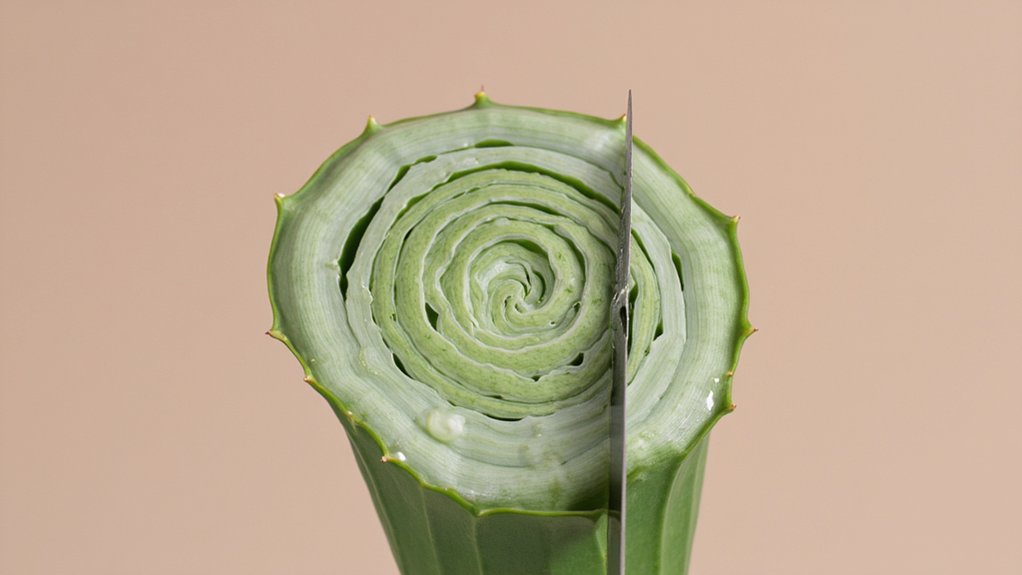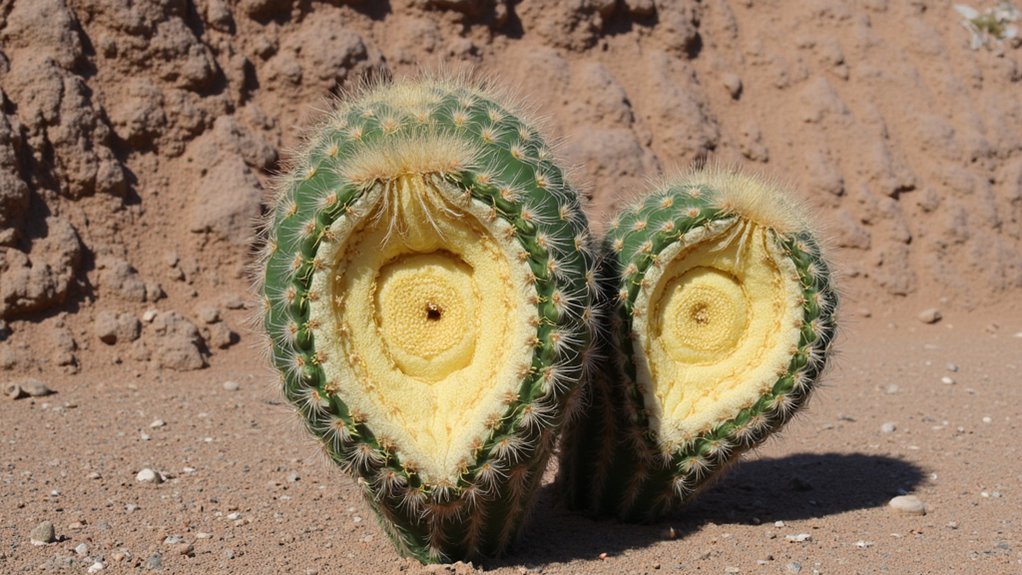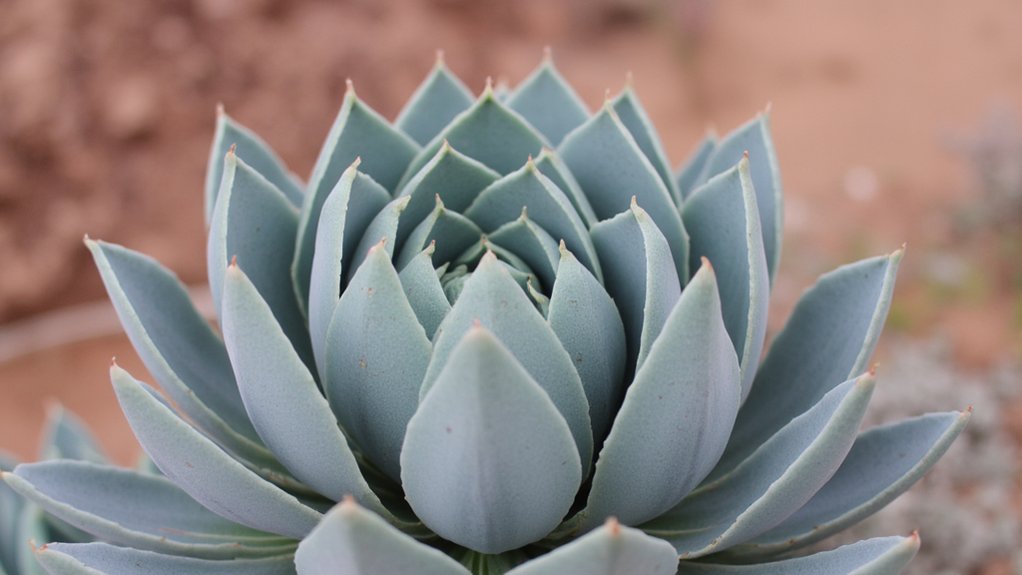You’ve probably noticed how cacti and other desert plants stay plump and healthy even during months of drought. Their secret lies in sophisticated water storage systems that you won’t find in typical garden plants. From specialized cells that expand like tiny water balloons to waxy coatings that trap precious moisture, these plants employ remarkable strategies that scientists are still working to fully understand. Let’s explore how these desert survivors manage their most precious resource.
Contents
- 1 The Science Behind Plant Water Storage
- 2 Specialized Desert Plant Tissues
- 3 Water-Saving Adaptations in Leaves
- 4 Root Systems and Water Collection
- 5 Chemical Processes of Water Retention
- 6 Seasonal Changes in Desert Plants
- 7 Evolution of Water Storage Mechanisms
- 8 Common Desert Plant Species and Their Storage Methods
- 9 Climate Change Impact on Desert Plant Adaptations
The Science Behind Plant Water Storage

While most plants rely on constant water access through their roots, desert plants have evolved remarkable mechanisms for storing water within their tissues. You’ll find specialized cells called vacuoles that can expand up to 95% of the cell’s volume, acting like tiny water balloons.
These plants convert water into a gel-like substance using complex carbohydrates and mucilage, which you can actually see if you cut open a cactus pad. They’ll store this gel in their stems, leaves, or roots, depending on the species. The thick, waxy coating on their surfaces helps prevent water loss through evaporation, letting them survive months without rain.
Specialized Desert Plant Tissues

Beneath the tough exterior of desert plants, you’ll find an intricate network of specialized tissues that work together to maximize water retention. The outer epidermis features a waxy coating called the cuticle, while specialized guard cells control moisture loss through microscopic pores.
Inside, you’ll discover the plant’s water storage tissue, called parenchyma, which can expand up to 98% of its original size. These cells, arranged in a honeycomb pattern, contain a sticky gel-like substance that binds water molecules, preventing evaporation even in 120°F heat.
The plant’s vascular tissues, xylem and phloem, act like smart plumbing systems, redistributing stored water only when needed.
Water-Saving Adaptations in Leaves

Desert plants’ sophisticated internal systems work hand-in-hand with their remarkable leaf adaptations. You’ll notice their leaves often have waxy coatings that reduce moisture loss by up to 80%, and many species feature tiny pores, called stomata, that close during hot daylight hours.
Most desert plants have evolved leaves that are either small and narrow, like the creosote bush, or thick and fleshy, like the agave. You’ll find that some species, such as the ocotillo, can even drop their leaves entirely during drought and regrow them within 48 hours after rainfall.
Root Systems and Water Collection
Three distinct root system types help plants survive in arid environments. You’ll find shallow, spreading roots that quickly absorb surface moisture after rain, while deep taproots can reach underground water sources up to 20 feet below. The third type, specialized rain roots, only activate when moisture’s present.
When you examine a desert plant’s roots, you’ll notice they’re often twice as wide as the plant’s canopy. These extensive networks can collect water from an area of up to 200 square feet. The roots’ waxy coating helps prevent moisture loss, while tiny root hairs maximize water absorption from even the driest soil.
Chemical Processes of Water Retention
When you look inside a desert plant’s cells, you’ll find remarkable chemical processes that enable water storage. The cells contain specialized molecules called aquaporins that regulate water movement, while organic acids help maintain ideal pH levels of 4.5-6.5.
You’ll notice that desert plants convert water and carbon dioxide into malic acid at night, storing it in vacuoles that can expand up to 95% of the cell’s volume. This process, called Crassulacean Acid Metabolism (CAM), lets them close their stomata during hot days to prevent water loss.
Through osmotic adjustment, these plants can concentrate solutes to maintain water pressure even during drought conditions.
Seasonal Changes in Desert Plants
Throughout the year, you’ll see dramatic transformations in how plants adapt to seasonal shifts in the desert’s harsh climate. During summer months, desert plants will shrink their leaves by up to 60% and thicken their waxy coating to reduce water loss through transpiration.
As winter approaches, you’ll notice these same plants expanding their surface area and producing new growth. Their stems can swell up to three times their dry-season size, storing water for future use. Many species, like the barrel cactus, will also adjust their ribbing patterns seasonally, accordion-style, to accommodate these volume changes.
Evolution of Water Storage Mechanisms
Over millions of years, desert plants have developed remarkable adaptations for storing water in their tissues. You’ll find that these mechanisms evolved from simple cell modifications into complex systems, with specialized cells called hydrenchyma that can expand up to 50 times their normal size.
When you examine cacti and other succulents, you’ll notice they’ve evolved thick, waxy cuticles that prevent water loss. Their stems have transformed into water-storing organs, while leaves have shrunk or disappeared entirely. Inside, you’ll discover intricate networks of specialized tissue that can hold up to 90% of the plant’s total water content.
Common Desert Plant Species and Their Storage Methods
Several fascinating desert plants demonstrate these evolved storage abilities in unique ways. You’ll find the barrel cactus storing up to 32 gallons of water in its pleated, expandable tissue, while the saguaro’s chambered interior can hold enough water to last a year.
The desert agave’s thick, fleshy leaves contain specialized cells that retain water through intense drought. You’ll notice how its waxy coating reduces moisture loss. Meanwhile, the living stones (Lithops) have developed transparent tissue windows that allow photosynthesis while keeping most of their water-holding mass underground.
The prickly pear’s segmented pads can store water for six months, expanding and contracting as needed.
Climate Change Impact on Desert Plant Adaptations
While desert plants have evolved remarkable water storage mechanisms, recent climate shifts pose unprecedented challenges to their survival. You’ll notice that many succulents are struggling to maintain their traditional water conservation methods as temperatures climb 2-3°F higher than historical averages.
These changes force plants to release stored water more frequently, leading to shortened lifecycles and decreased reproduction rates. When you examine desert areas closely, you’ll see species like barrel cacti developing thicker waxy coatings and deeper roots, attempting to adapt to longer dry spells that now stretch 20-30% longer than in previous decades.
